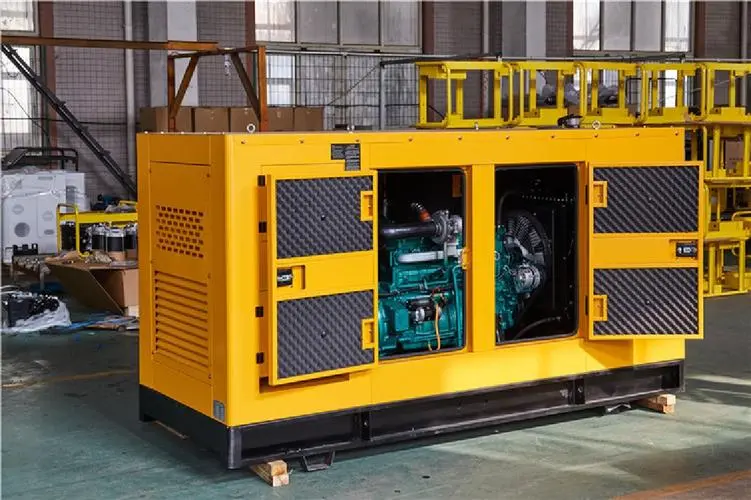Introduction
In the world of power generation, diesel generators play a crucial role in providing backup power in various environments and conditions. However, when it comes to high-altitude operations, the challenges faced by diesel generators are amplified due to factors such as reduced oxygen levels, temperature fluctuations, and increased maintenance requirements. In this article, we will explore the unique considerations and strategies for optimizing the performance of diesel generators in high-altitude environments above 5000 feet.
Understanding High-Altitude Challenges
Operating a diesel generator at high altitudes presents several challenges that can impact its efficiency, reliability, and longevity. One of the primary challenges is the reduced oxygen levels at higher elevations, which can affect the combustion process in the engine. Diesel engines rely on a precise mixture of air and fuel for combustion, and the lower oxygen levels can lead to incomplete combustion, lower power output, and decreased fuel efficiency.
In addition to the reduced oxygen levels, high-altitude operations also pose challenges related to temperature fluctuations. At higher elevations, temperatures can vary significantly between day and night, which can impact the performance and reliability of the diesel generator. Extreme temperature changes can affect the viscosity of the fuel, lubricants, and other fluids in the engine, leading to issues such as fuel gelling, oil thickening, and increased wear and tear on engine components.
Furthermore, high-altitude environments are often characterized by harsh weather conditions, including strong winds, snow, and ice, which can pose additional challenges for diesel generators. These conditions can impact the ventilation and cooling systems of the generator, leading to overheating or other malfunctions. Additionally, the remote and inaccessible nature of many high-altitude locations can make maintenance and repairs more challenging and time-consuming.
Optimizing Diesel Generators for High-Altitude Operations
To overcome the challenges associated with high-altitude operations, it is essential to implement strategies and technologies that can optimize the performance and reliability of diesel generators in these environments. Below are some key considerations for maximizing the efficiency and longevity of diesel generators at high altitudes:
1. Engine Design and Altitude Compensation
When selecting a diesel generator for high-altitude operations, it is crucial to consider the engine design and the availability of altitude compensation features. Engines with turbochargers or superchargers are better suited for high-altitude environments as they can help compensate for the reduced oxygen levels by increasing the air intake pressure. This, in turn, improves combustion efficiency and power output, ensuring reliable performance at high altitudes.
Altitude compensation systems can also help optimize the fuel-air mixture ratio to suit the prevailing altitude conditions. 300kw diesel generator for event management adjust the fuel injection timing and quantity based on the altitude, ensuring efficient combustion and optimal engine performance. When choosing a diesel generator for high-altitude operations, look for models that are equipped with altitude compensation features to maximize efficiency and reliability.
2. Cold Weather Packages
In high-altitude environments, temperature fluctuations can be a significant concern, particularly during the winter months. To ensure reliable operation in cold weather conditions, consider opting for a diesel generator with a cold weather package. These packages typically include features such as block heaters, battery warmers, and coolant heaters that help maintain optimal operating temperatures and prevent issues such as cold starting problems and fuel gelling.
In addition to cold weather packages, it is essential to use winter-grade fuel and lubricants that are formulated to withstand low temperatures. Regularly monitoring and replacing these fluids according to manufacturer recommendations can help prevent cold weather-related issues and ensure the longevity of the diesel generator.
3. Proper Ventilation and Cooling
High-altitude environments often experience strong winds and temperature differentials that can impact the ventilation and cooling systems of diesel generators. To prevent overheating and ensure efficient operation, it is essential to design and install adequate ventilation and cooling systems for the generator. This may include the use of external cooling fans, air ducts, and heat exchangers to maintain optimal operating temperatures and prevent heat buildup in the engine compartment.
Regular maintenance and inspection of the ventilation and cooling systems are also crucial to identify and address any issues before they escalate. Keep the generator intake and exhaust vents clear of debris, snow, and ice to ensure proper airflow and prevent blockages that can lead to overheating. Additionally, monitor the coolant levels and condition regularly and replace coolant as needed to prevent engine overheating and corrosion.
4. Remote Monitoring and Maintenance
Given the remote and often inaccessible nature of high-altitude locations, it is essential to implement remote monitoring and maintenance capabilities for diesel generators operating in these environments. Remote monitoring systems allow operators to track the performance, fuel consumption, and operating parameters of the generator in real time, enabling early detection of issues and proactive maintenance.
Additionally, remote maintenance capabilities can help streamline the troubleshooting and repair process by allowing service technicians to diagnose and address issues remotely. This can reduce downtime, minimize the need for on-site visits, and ensure timely maintenance and repairs to prevent costly breakdowns.
Conclusion

Diesel generators are a reliable and efficient power generation solution for high-altitude operations, provided that they are properly optimized and maintained for the unique challenges of these environments. By considering factors such as engine design, altitude compensation, cold weather packages, ventilation and cooling systems, and remote monitoring capabilities, operators can maximize the efficiency and reliability of diesel generators at high altitudes.
As high-altitude operations continue to grow in importance across various industries, the demand for robust and adaptable power generation solutions will also increase. By understanding the challenges and implementing best practices for optimizing diesel generators in high-altitude environments, operators can ensure uninterrupted power supply, improve operational efficiency, and mitigate the risks associated with extreme conditions.
